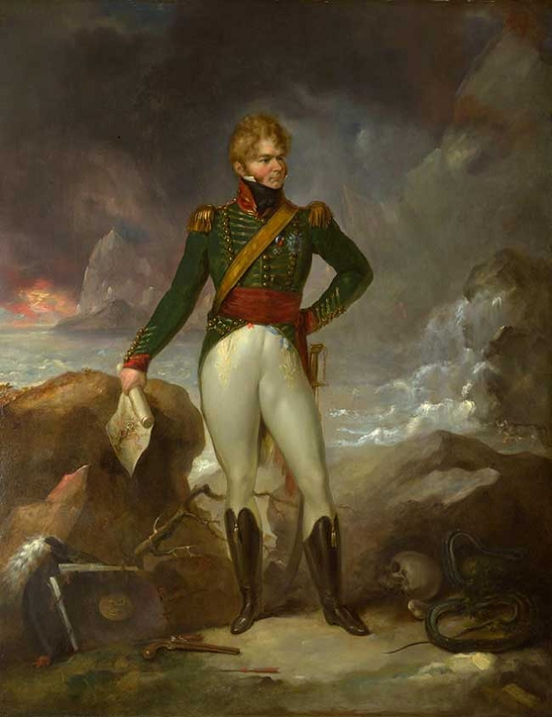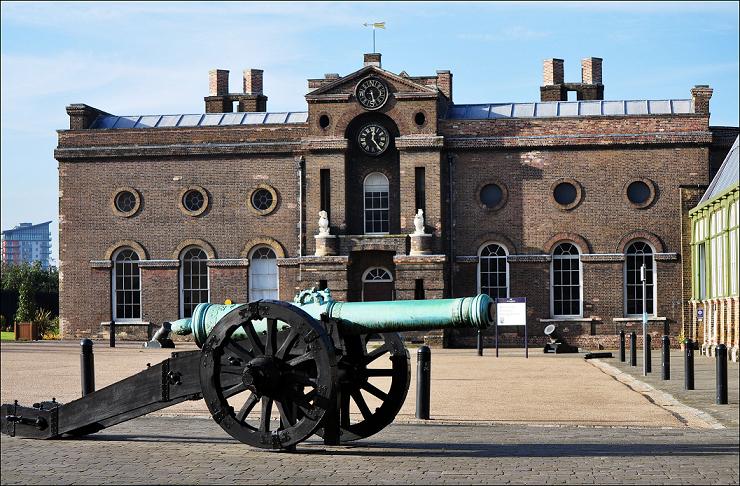|
De Lacy Evans
General Sir George de Lacy Evans (7 October 1787 – 9 January 1870) was an Irish officer in the British Army who served in four of the United Kingdom's 19th century wars. He became a long-serving Member of Parliament. Life Evans was born in 1787, in Moig, County Limerick, Ireland. Educated at Woolwich Academy he followed his elder brother Richard (1782–1847) into the military, joining the East India Company's forces in 1800 before volunteering for the British Army in India in 1806. He obtained an ensigncy in the 22nd Regiment of Foot in 1807 then exchanged into the 3rd Light Dragoons in order to take part in the Peninsular War. He was sent on the expedition to the United States of 1814 during the War of 1812 under Major General Robert Ross. Evans was quartermaster general to Ross at the Battle of Bladensburg on 24 August 1814, and during the Burning of Washington, as well as at the Battle of North Point on 12 September 1814, where Ross was killed. Evans was activel ... [...More Info...] [...Related Items...] OR: [Wikipedia] [Google] [Baidu] |
County Limerick
County Limerick () is a western Counties of Ireland, county in Republic of Ireland, Ireland. It is in the Provinces of Ireland, province of Munster and is located in the Mid-West Region, Ireland, Mid-West which comprises part of the Southern Region, Ireland, Southern Region. It is named after the city of Limerick. Limerick City and County Council is the Local government in the Republic of Ireland, local council for the county. The county's population at the 2022 census was 209,536 of whom 102,287 lived in Limerick City, the county capital. Geography Limerick borders four other counties: County Kerry, Kerry to the west, County Clare, Clare to the north, County Tipperary, Tipperary to the east, and County Cork, Cork to the south. It is the fifth-largest of Munster's six counties in size and the second-largest by population. The River Shannon flows through the city of Limerick, then continues as the Shannon Estuary until it meets the Atlantic Ocean past the far western end of the c ... [...More Info...] [...Related Items...] OR: [Wikipedia] [Google] [Baidu] |
Legion Of Honour
The National Order of the Legion of Honour ( ), formerly the Imperial Order of the Legion of Honour (), is the highest and most prestigious French national order of merit, both military and Civil society, civil. Currently consisting of five classes, it was originally established in 1802 by Napoleon, Napoleon Bonaparte, and it has been retained (with occasional slight alterations) by all later French governments and regimes. The order's motto is ' ("Honour and Fatherland"); its Seat (legal entity), seat is the Palais de la Légion d'Honneur next to the Musée d'Orsay, on the left bank of the Seine in Paris. Since 1 February 2023, the Order's grand chancellor has been retired General François Lecointre, who succeeded fellow retired General Benoît Puga in office. The order is divided into five degrees of increasing distinction: ' (Knight), ' (Officer), ' (Commander (order), Commander), ' (Grand Officer) and ' (Grand Cross). History Consulate During the French Revolution, all ... [...More Info...] [...Related Items...] OR: [Wikipedia] [Google] [Baidu] |
George De Lacy Evans By Stroehling
George may refer to: Names * George (given name) * George (surname) People * George (singer), American-Canadian singer George Nozuka, known by the mononym George * George Papagheorghe, also known as Jorge / GEØRGE * George, stage name of Giorgio Moroder * George, son of Andrew I of Hungary Places South Africa * George, South Africa, a city ** George Airport United States * George, Iowa, a city * George, Missouri, a ghost town * George, Washington, a city * George County, Mississippi * George Air Force Base, a former U.S. Air Force base located in California Computing * George (algebraic compiler) also known as 'Laning and Zierler system', an algebraic compiler by Laning and Zierler in 1952 * GEORGE (computer), early computer built by Argonne National Laboratory in 1957 * GEORGE (operating system), a range of operating systems (George 1–4) for the ICT 1900 range of computers in the 1960s * GEORGE (programming language), an autocode system invented by Charles Leonard Hamblin ... [...More Info...] [...Related Items...] OR: [Wikipedia] [Google] [Baidu] |
Institute Of Historical Research
The Institute of Historical Research (IHR) is a British educational organisation providing resources and training for historical researchers. It is part of the School of Advanced Study in the University of London and is located at Senate House. The institute was founded in 1921 by A. F. Pollard. History Foundation The IHR was founded in 1921 by British historian Albert Pollard with the help of Eliza Jeffries Davis. Appointed professor of Constitutional History at University College London in 1903, his inaugural address, a year later, argued for the need for a postgraduate school of historical research. With a generous and anonymous donation of £20,000 from Sir John Cecil Power in 1920 towards the founding of the institute, Pollard's dream was realised. The institute was formally opened by H. A. L. Fisher on 8 July 1921. The IHR was directly administered by the Senate of the University of London, rather than being part of one of the federal colleges. It was the firs ... [...More Info...] [...Related Items...] OR: [Wikipedia] [Google] [Baidu] |
Peninsular War
The Peninsular War (1808–1814) was fought in the Iberian Peninsula by Kingdom of Portugal, Portugal, Spain and the United Kingdom of Great Britain and Ireland, United Kingdom against the invading and occupying forces of the First French Empire during the Napoleonic Wars. In Spain, it is considered to overlap with the Spanish War of Independence. The war can be said to have started when the First French Empire, French and History of Spain (1808–1874), Spanish armies Invasion of Portugal (1807), invaded and occupied Portugal in 1807 by transiting through Kingdom of Spain (1810-1873), Spain, but it escalated in 1808 after First French Empire, Napoleonic France occupied History of Spain (1808–1874), Spain, which had been its ally. Napoleon Bonaparte Abdications of Bayonne, forced the abdications of Ferdinand VII of Spain, Ferdinand VII and his father Charles IV of Spain, Charles IV and then installed his brother Joseph Bonaparte on the Spanish throne and promulgated the ... [...More Info...] [...Related Items...] OR: [Wikipedia] [Google] [Baidu] |
3rd Light Dragoons
Third or 3rd may refer to: Numbers * 3rd, the ordinal form of the cardinal number 3 * , a fraction of one third * 1⁄60 of a ''second'', i.e., the third in a series of fractional parts in a sexagesimal number system Places * 3rd Street (other) * Third Avenue (other) * Highway 3 Music Music theory *Interval number of three in a musical interval **Major third, a third spanning four semitones **Minor third, a third encompassing three half steps, or semitones **Neutral third, wider than a minor third but narrower than a major third **Augmented third, an interval of five semitones **Diminished third, produced by narrowing a minor third by a chromatic semitone *Third (chord), chord member a third above the root *Degree (music), three away from tonic **Mediant, third degree of the diatonic scale **Submediant, sixth degree of the diatonic scale – three steps below the tonic ** Chromatic mediant, chromatic relationship by thirds *Ladder of thirds, similar to the c ... [...More Info...] [...Related Items...] OR: [Wikipedia] [Google] [Baidu] |
Ensign (rank)
Ensign (; Middle English#Late Middle English, Late Middle English, from Old French ["mark", "symbol", "signal"; "flag", "standard", "pennant"], from Latin [plural]) is a junior rank of a Officer (armed forces)#Commissioned officers, commissioned officer in the armed forces of some countries, normally in the infantry or navy. As the junior officer in an infantry regiment was traditionally the carrier of the Military colours, standards and guidons, regimental colors, the rank acquired the name "ensign". This rank has generally been replaced in army ranks by second lieutenant. An ensign was generally the lowest-ranking commissioned officer, except where the rank of Subaltern (military), subaltern existed. In contrast, the Arab rank of ensign, لواء, ''liwa (Arabic), liwa''', derives from the command of a unit with an ensign, not from the carrier of the unit's ensign, and is today the equivalent of major general. According to Thomas Venn's 1672 ''Military and Maritime Disci ... [...More Info...] [...Related Items...] OR: [Wikipedia] [Google] [Baidu] |
East India Company
The East India Company (EIC) was an English, and later British, joint-stock company that was founded in 1600 and dissolved in 1874. It was formed to Indian Ocean trade, trade in the Indian Ocean region, initially with the East Indies (South Asia and Southeast Asia), and later with East Asia. The company gained Company rule in India, control of large parts of the Indian subcontinent and British Hong Kong, Hong Kong. At its peak, the company was the largest corporation in the world by various measures and had its own armed forces in the form of the company's three presidency armies, totalling about 260,000 soldiers, twice the size of the British Army at certain times. Originally Chartered company, chartered as the "Governor and Company of Merchants of London Trading into the East-Indies," the company rose to account for half of the world's trade during the mid-1700s and early 1800s, particularly in basic commodities including cotton, silk, indigo dye, sugar, salt, spices, Potass ... [...More Info...] [...Related Items...] OR: [Wikipedia] [Google] [Baidu] |
Woolwich Academy
The Royal Military Academy (RMA) at Woolwich, in south-east London, was a British Army military academy for the training of commissioned officers of the Royal Artillery and Royal Engineers. It later also trained officers of the Royal Corps of Signals and other technical corps. RMA Woolwich was commonly known as "The Shop" because its first building was a converted workshop of the Woolwich Arsenal. History Origins in the Royal Arsenal An attempt had been made by the Board of Ordnance in 1720 to set up an academy within its Arsenal (then known as the Warren) to provide training and education for prospective officers of its new Regiment of Artillery and Corps of Engineers (both of which had been established there in 1716). A new building was being constructed in readiness for the Academy and funds had been secured, seemingly, through investment in the South Sea Company; but the latter's collapse led to plans for the Academy being placed on hold. After this false start, the acade ... [...More Info...] [...Related Items...] OR: [Wikipedia] [Google] [Baidu] |



